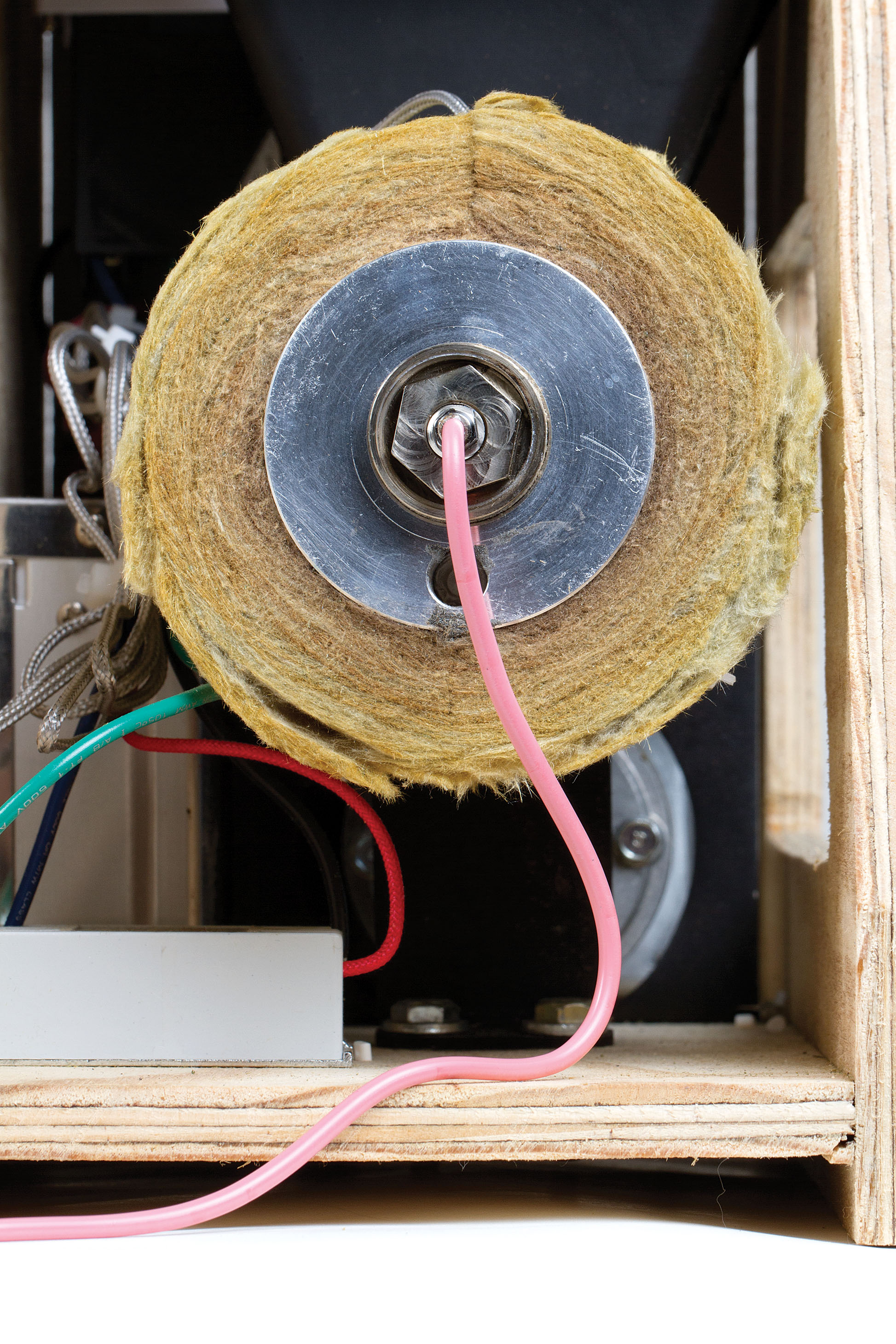Place the machine on a tabletop, with its nozzle at the edge.
Turn all switches off. Plug in the Filabot, then turn on the Main Power and Temperature Controller switches. To use the temperature controller, follow the bundled manual. PID temperature controllers do some calculus to predict ups and downs and keep temperatures extremely smooth.
Set the temperature for the plastic you’re extruding and wait until the chamber reaches the desired temperature. Only extrude at the proper temperature; running the machine too cold can damage mechanical components.
ABS extrusion temperatures range from 150°C to 180°C. PLA extrusion temperatures range from 130°C to 160°C. The temperature controller measurements will read slightly lower than the actual extrusion temperature. Adjust as needed for performance.
Put pellets in the hopper, and turn on the Feed switch. The first time you run the extruder, the first 1/2lb of filament or so may have a gray color from the oil used during machining. We don’t recommend printing with it until the filament comes out clean.
As the filament starts to come out, guide it onto the floor below and lay the first few feet in a circle. This will make the filament naturally coil on the floor. From this point, just keep the hopper topped off and filament will keep pumping out. Every so often, check the filament for air bubbles. If they appear, lower the temperature as needed to eliminate them.
Once you’re done making a batch of filament, turn all the switches off, unplug the power cord, and leave it unplugged until the next usage.
The Filabot Wee has been tested with ABS and PLA, and can make both 1.75mm and 3mm-diameter filament. Most of the time, you’ll use the “undersized” nozzles; these are drilled smaller to compensate for plastic’s tendency to swell during extrusion. The test nozzles drilled at exactly 1.75mm and 3mm are included so that if you’re extruding a different grade or type of plastic, you’ll be able to measure the swelling and make your own nozzles to compensate.
You can rig your own reel or other method of collecting fresh filament as it extrudes, or try our Filamatic spooling kit. It has a 12rpm gearmotor and a custom circuit board and uses 2 photo gates as switches. It works with both 1.75mm and 3mm filament diameters and can handle any extrusion rate.
CAUTION: The Filabot may work with other plastics, but if you experiment, be sure you understand any potential hazards. PVC, for instance, may emit toxic fumes during extrusion.





